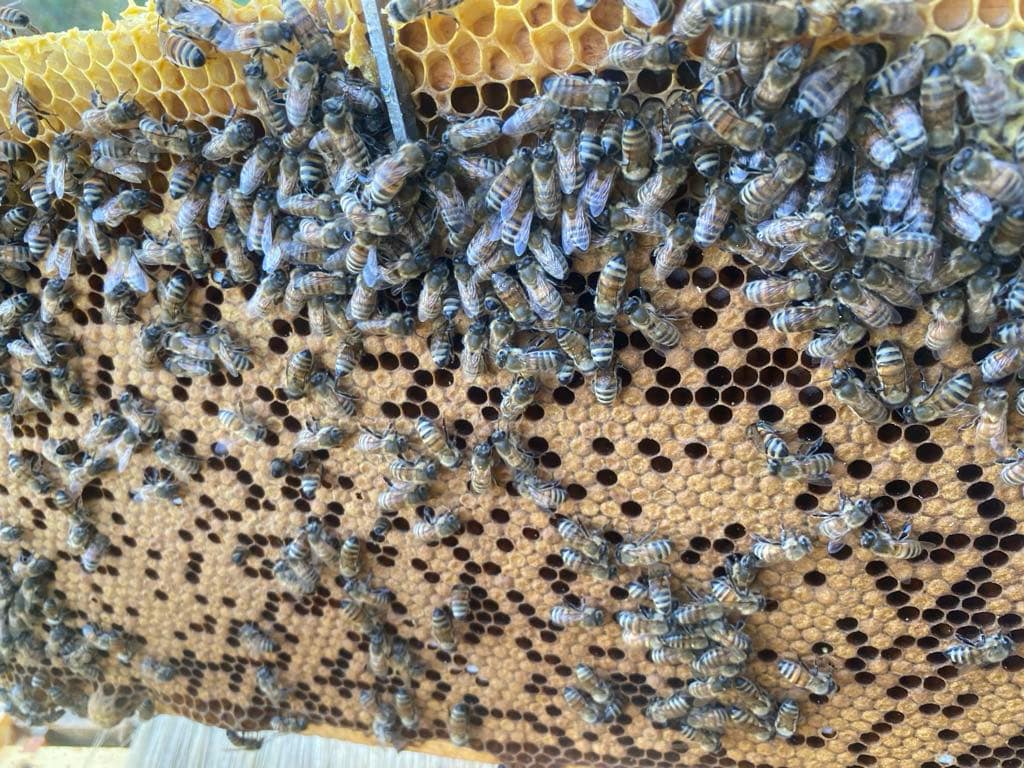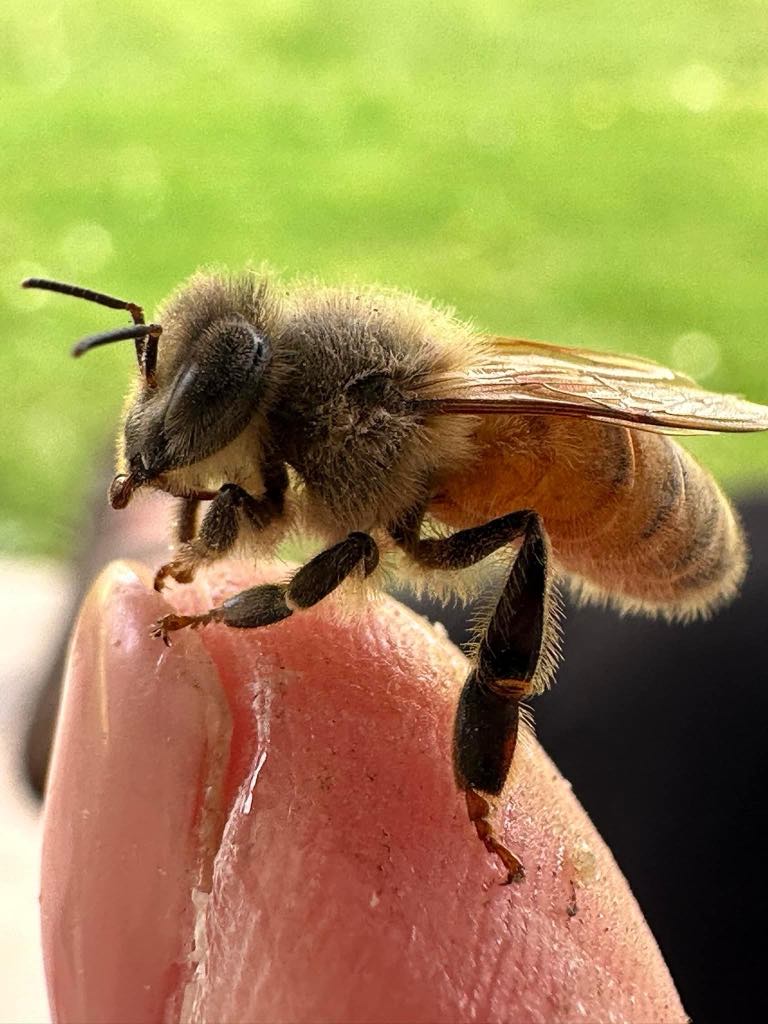
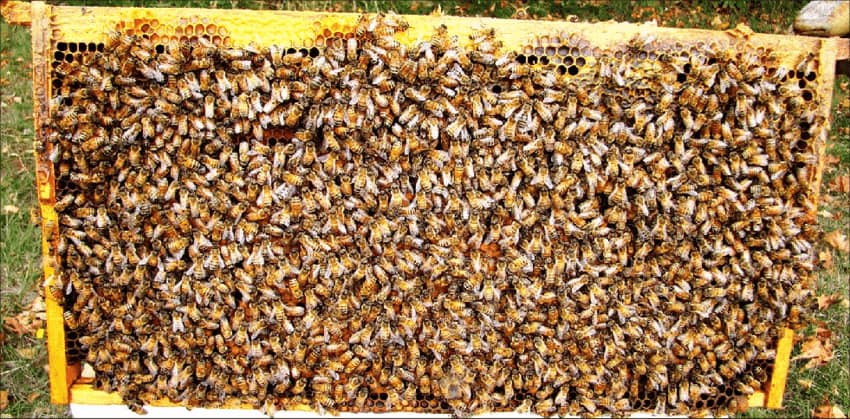
About Year 5 – 6 of our beekeeping journey we started to focus on good queens and the idea of breeding for hygienic behavior. We had a small number of queens overwinter, manage to survive without a lot of treatment, and still produce enough honey for us to take at least one super and leave them with one super.
This was new ground for us two years ago. At this time i was running around picking up used equipment that we bought online. Every time I picked up something, I would ask all the questions that I could. We learned a lot from commercial beekeepers before we ever thought of increasing our number of hives.
The following is a summary of our Journey.
Bee Hive Maintenance and Husbandry
For 10 years we tried to be natural beekeepers, only treating with natural products and trying to use older methods to treat mites and maintain hive health. We had excellent years with almost 100% survival rates, and we had devastating years. Our experience led us to keep researching and studying to find a repeatable method.
Let me qualify, there are so many variables in beekeeping that it is impossible to develop one method that works for everyone. Even the beekeepers we mentor that are in our area may not face the same problems that we face when treating mites, or overwintering bees.
Before talking about the bees, let me update you on some of our treatment protocols and husbandry methods.
These are the steps we took in the last 18 months to treat more, and to build up resistance. The one thing we did learn over 10 years is that bees will not achieve a sustainable, healthy population on their own.
- 2023 we purchased our first instavape. Fall 2024 we purchased our second.
- We now treat when needed, not by the calendar. We did more mite washes this year than ever before. Randy Oliveras really hit home when he stated that it is irrational to refuse to sacrifice a ½ cup of bees to ensure the health of the whole hive.
- Michael Palmer discovered that nucs can manage mites better than hives. Other beekeepers deal with hives by continually breaking into nucs. We started this in 2024.
- This month we started wrapping our hives in cozies for the first time. We also learned the importance of wind breaks from one of our mentors. We will be putting straw infront of hives that are in the path of the winter wind, and will be moving them in March.
- We will be building a nuc overwintering facility in early 2025. We will be monitoring whether this helps, or hinders, mite growth and diseases growth.
- With the increase in EFB (European Foul Brood) in Ontario, we treated our hives this fall with an antibiotic.
- We learned a lot about hive stress and it’s correlation with be health. This led us to include probiotics, every month. Last spring we added pollen patties until the pollen started coming in.
- We brough in Buckfast Queens from Italy and flooded the area with drones. 3 original queens survived the year. We have over 100 F1 and F2 (generation 1 and generation 2) descendants going into the winter.
- I started to learn to graft so that we can select our own queens, from our strongest hives.
- Research offers solid proof that most bees die early in the year, or in March when they run out of stores. Last winter we started feeding sugar in March, and syrup as soon as the weather went above 10.
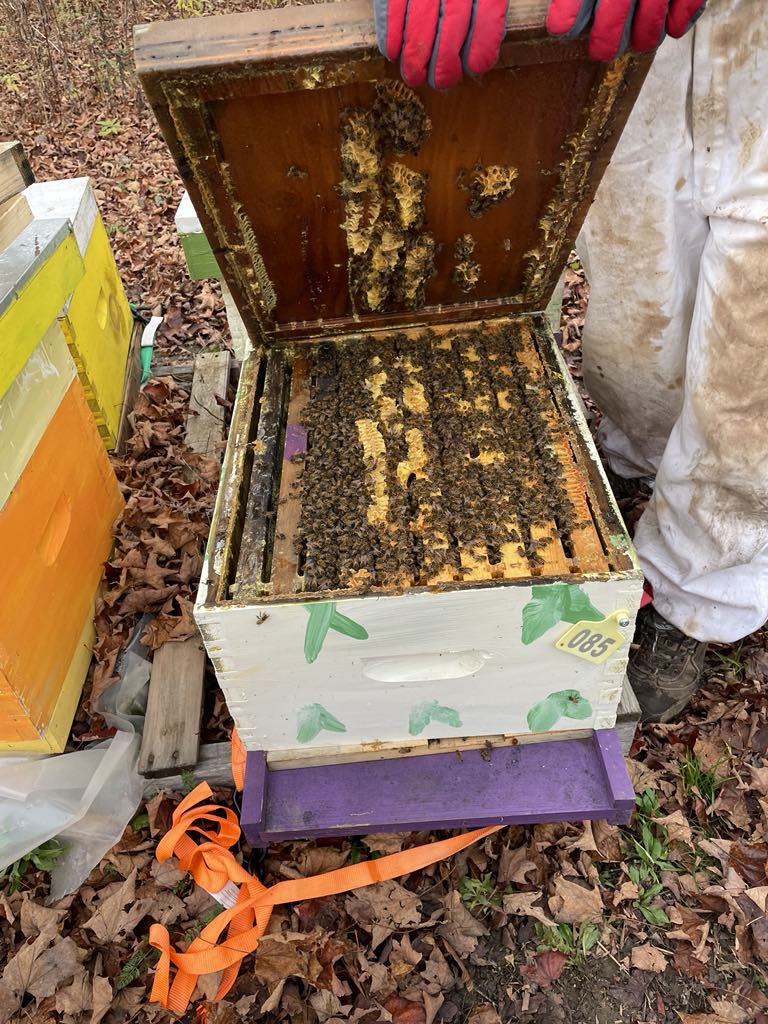
Why use Treatments when our Goal is Resistant Bees?
Why are we treating and paying more attention to bee gut health when our focus is on developing resistant bees? The answer is simple. The first generation will not be resistant. They will show stronger traits that we are looking for, a) hygienic behavior, b) laying longer in the fall, c) larger colonies after a major mite infestation (more than 10 per ½ cup of bees).
The second, reason is that the answer may not be in the bees genetic. It might be in their gut health, nutrition, or it might be that we beekeepers are making a glaring mistake which we are not seeing.
What we found out that compared Management to Resistant Bees?
We may find that resistance is in diet, not genetics, or it may be a combination of both.
One thing we did learn in the last 10 years was that survival rates seemed to have a direct correlation to the age of the comb. Bees in hives with new comb seemed to survive longer than bees in older comb.
There are many reasons why this is true. It may be one of the following, or a combination:
Pesticides,
- Bacteria and viruses,
- Fungus,
- Pathogens and varroa mites,
- Location,
- Weather,
- Smaller comb doesn’t facilitate breeding winter bees,
- Queens will lay in old comb, but will lay better in new,
- Or, it could be that the winter nurse bees do not like caring for brood in the old comb.
This year I put old comb and new comb in the brood chamber and some queens refused to lay in the old comb. Halfway through the season there was no brood or honey in the old comb.
In the first 3 years of our journey, we had new comb in the hives. In the next three years about 50% of the comb was old. Our survival rate was better in the first three years. This is only part of the method, as we started to overwinter in double hives in the last three years as well.
In 2024 we put hive alive in some hives, and sugar in others. We did this with both Double Nuc boxes and Singles. I am interested to see if the bees with hive alive out performed the bees with just sugar.
The Bees
Over 10 years we have tried many bees, mostly Carniolan crosses but we have had Russian, Carniolan, and Buckfast because these were bees that were imported locally. Spring 2024 was the first year we imported queens.
Why did we import queens?
We wanted to explore packages. We heard a lot of negative information about packages and I will agree, they are very likely to swarm at every chance, before and after swarm season.
What we did like was the fact that the package bees, and the Queens we got from Mark at Early Queen Arrivals readily accept any queen, including virgins, all through the season from May to September.
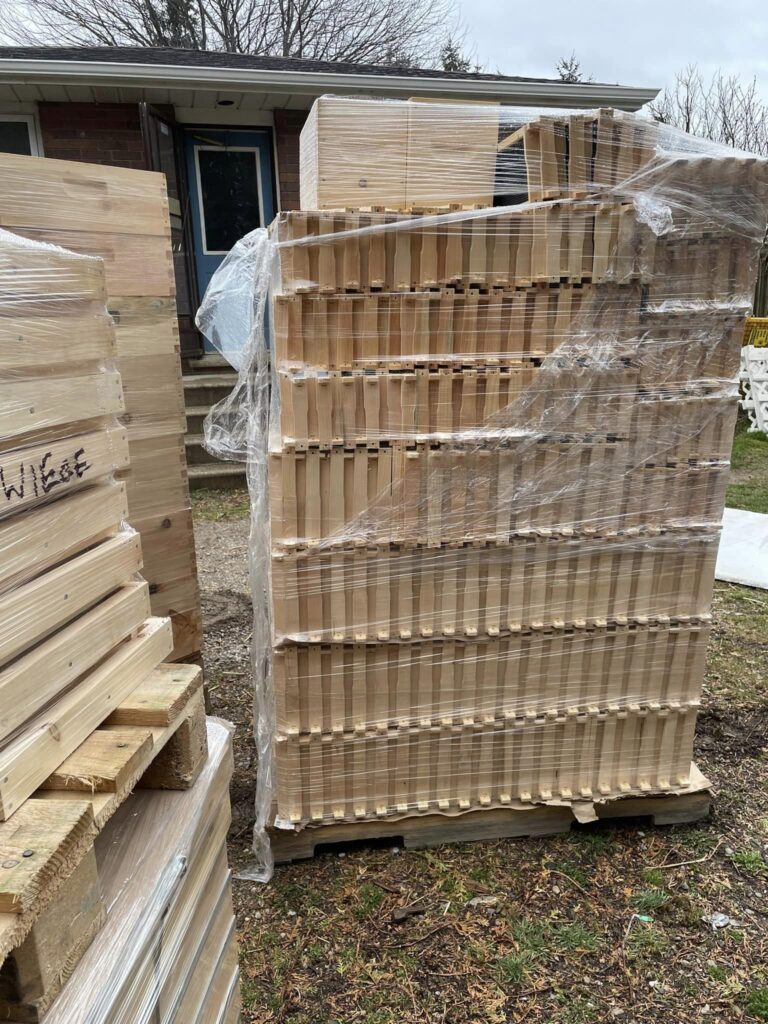
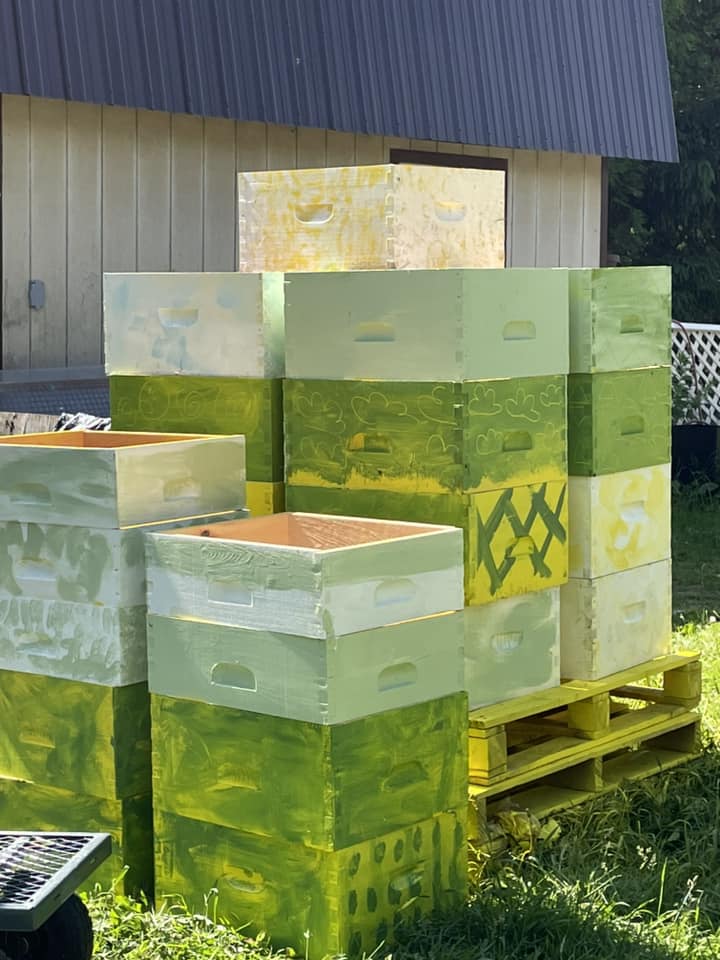
They were also very prolific. Whether it was the breed, the fact they were in brood factories, or something else, they were very prolific. We purchased 10 packages and split them in 2 weeks putting more import queens in the splits. By mid June we had turned 10 packages into 90 hives.
The EarlyQueenArrival queens from https://www.tenutailritiro.com/ performed well, and were excellent for grafting. They were much larger queens than we expected, and we only had 3 that were not accepted out of 20. The rest were laying 1 – 3 full frames of comb a week, depending on the queen. They continued this well into June. We will be grafting from one queen next spring.
The Buckfast had better hygienic, but both breeds demonstrated strong hygienic behavior. The queens we chose to breed in 2025 were all still laying in November. They did not swarm. They also showed good resistance to varroa bites and diseases, but the true test will be whether they overwinter.
Where are We going in 2025?
We are not sure. We have 1 red queen overwinter last year with a strong hive, and we grafted from her. We have 2 of her offspring who were marked as breeders. The rest of our bees are new to us this year. The bees from Keith are not new to the area.
However, we are very interested in becoming members of The Ontario Bee Breeders’ Association (OBBA) and working with Ontario Resistant Honey Bee Selection Program. This may result in our main breeding yard being switched to the ORHBS genetics. If we do this, I still want to pursue the genetics we have been working on over the last 2 years.
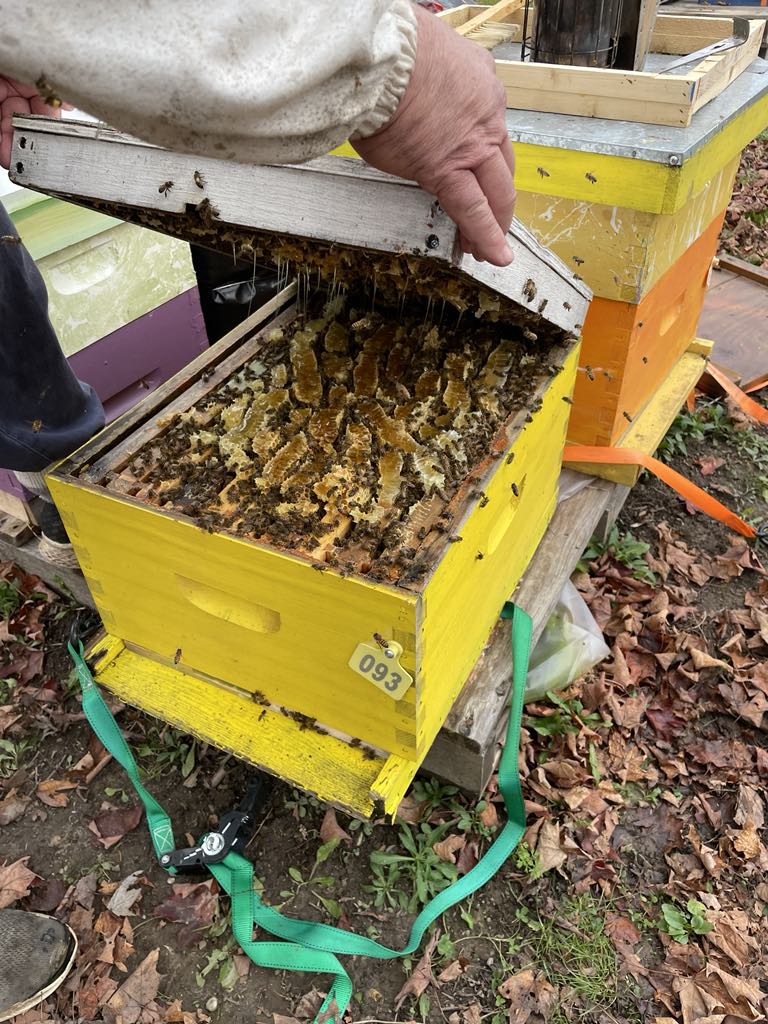
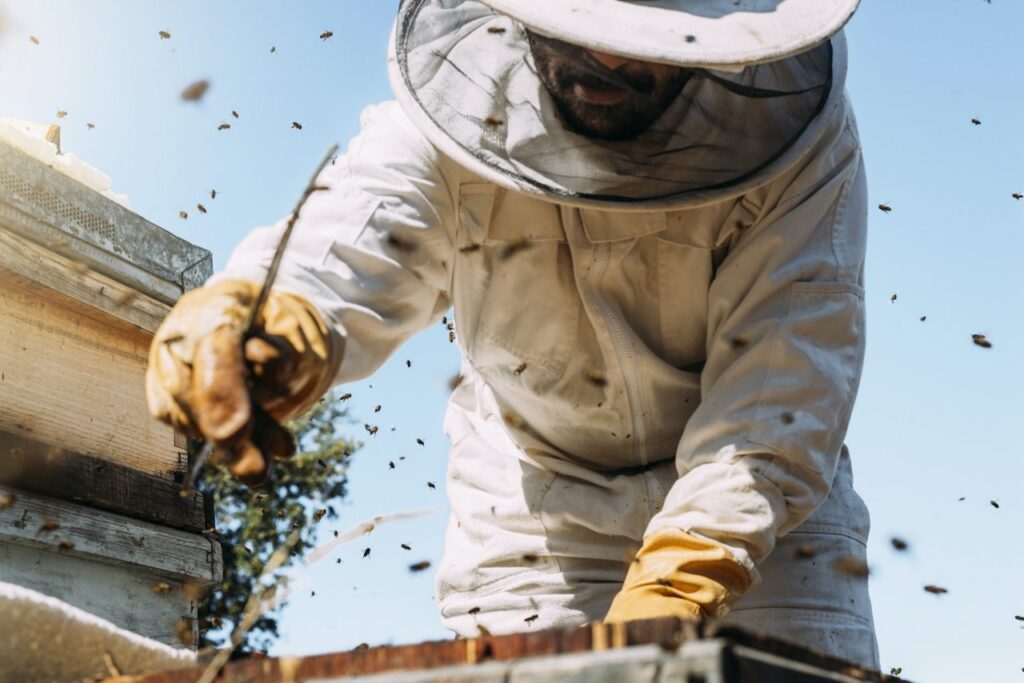
Post tags :
Share :
Latest Post

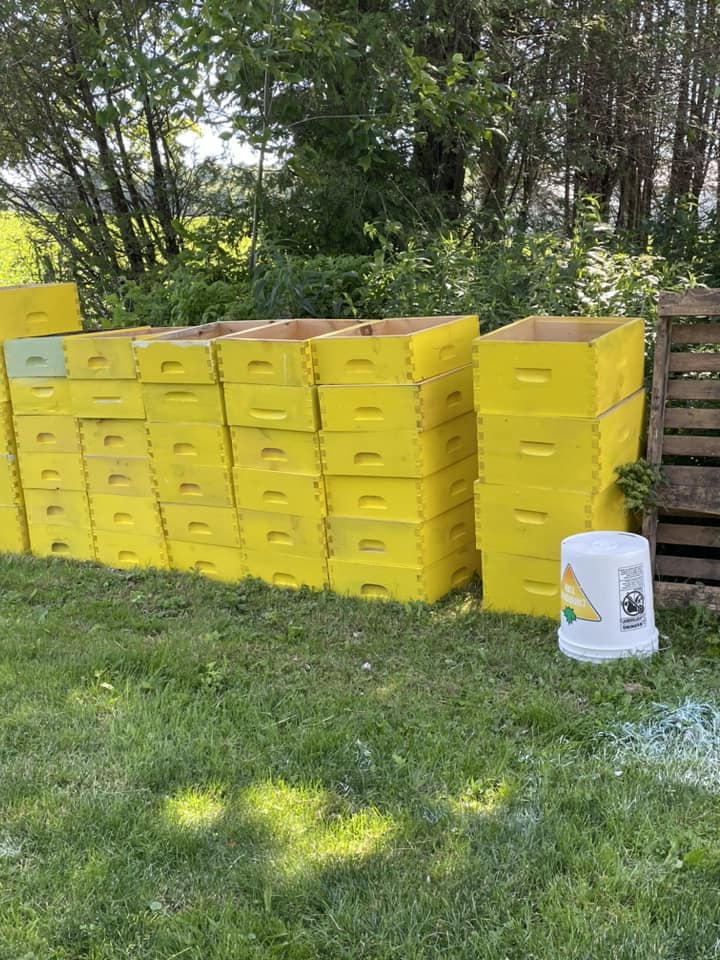
The Investment in Bees – Time and Money
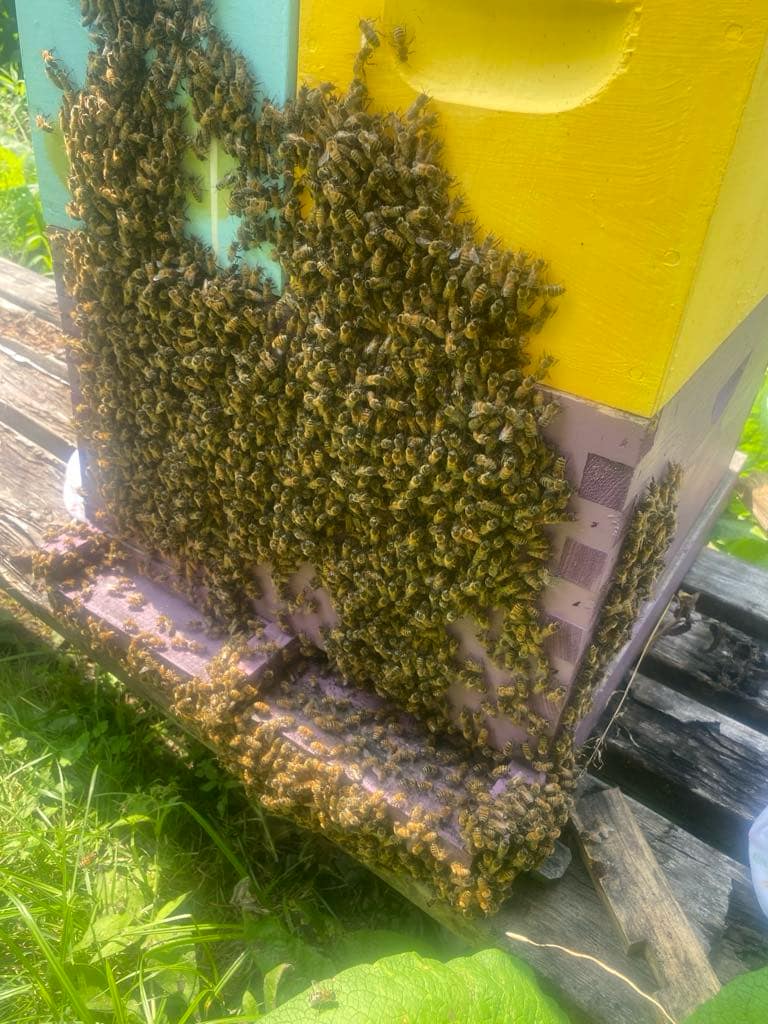
How to Test for Varroa Destructor Mite
